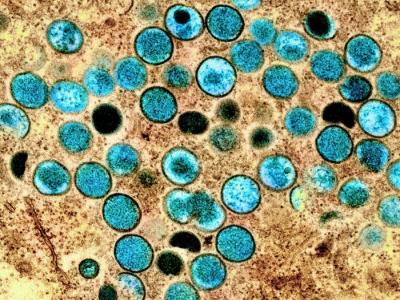Editor's note: This story was revised on Jul 14 to clarify information from Dr. Fred Hayden about the use of neuraminidase inhibitors to treat flu patients.
Jul 13, 2010 ATLANTA (CIDRAP News) – As the world recovers its bearings after spikes in pandemic flu activity and anticipates how the upcoming flu season will unfold, antiviral and vaccine experts in Atlanta today plotted out the new prevention and treatment tools public health officials may someday use to fine-tune their disease responses.
The tools range from new antivirals undergoing testing in unique combinations through novel routes of administration to influenza vaccine proteins that are harvested from plants in greenhouse factories. Experts presented the new developments at the International Conference on Emerging Infectious Diseases (ICEID) in Atlanta.
What's next for antivirals?
Virologist Fred Hayden, MD, said neuraminidase inhibitors have traditionally played a prominent role in flu prophylaxis and treatment, but recent research findings from their use in severely hospitalized patients during the H1N1 pandemic have shown benefits, even when started late. However, he said researchers have noted prolonged virus replication in the lower respiratory tract in some seriously ill patients who have been prescribed the drugs, and still note some poor outcomes in patients who received the drugs early.
"There's room for improvement for a more robust antiviral," said Hayden, a virologist at the University of Virginia and flu research coordinator for Wellcome Trust, a London-based nonprofit group.
Three of the antivirals that are advancing through trials are neuraminidase inhibitors, the class to which the already-approved oseltamivir (Tamiflu) and zanamivir (Relenza) belong.
Intravenous (IV) peramivir, which was used under an emergency authorization in the United States, is in phase 3 trials and has already received regulatory approval in Japan, he said. During the H1N1 pandemic about 1,200 courses of IV peramivir were used in the United States, Hayden added.
Clinical findings during the pandemic, however, have raised some doubts about its effectiveness in treating oseltamivir-resistant influenza, Hayden said. "IV zanamivir is still the treatment of choice if oseltamivir resistance is suspected or proven."
Because neuraminidase inhibitors have different spectrums of activity, other new research avenues are exploring combination therapies, he said. For example, in vitro and animal studies on using the new drug favipiravir with another neuraminidase inhibitor have shown encouraging results, and the possibility of testing this combination in hospitalized flu patients is under discussion.
Hayden said some in vitro studies of neuraminidase combinations have raised questions about possible antagonistic activity at some concentrations, whereas other in vitro and animal studies have suggested additive activity. He said scientists should look at the variability in the data very carefully.
One obstacle that could slow the delivery of new neuraminidase inhibitors to the marketplace is a lack of regulatory agreement on appropriate endpoints for hospitalized patients, not just clinical but also virological. "Dialogues are still in progress, and studies are under way to help guide this," Hayden said.
Changing vaccine landscape
Rick Bright, PhD, said about 75 new flu vaccine technologies are moving forward on several different fronts and in several different countries, including a handful of developing countries. The recent pandemic vaccine experience showed how poorly traditional flu vaccine production is equipped to respond to surge demands, as well as a lack of capacity that results to a 6-billion-dose gap for the global population, he said.
Bright is scientific director for the influenza vaccine project at PATH (Program for Appropriate Technology in Health), a global nonprofit health group.
He said the most promising flu vaccines on the horizon involve live attenuated influenza vaccine (LAIV), virus-like particle (VLP), plant-based, and universal flu vaccine technology, with each having its own set of strengths and challenges. Bright said, for example, that LAIV products are one of the lowest-cost vaccines to make and can be rapidly produced, but they face regulatory barriers in developing countries that might have difficulty evaluating them without large efficacy trials.
VLP vaccines have a high yield and production technology can easily be transferred to developing countries, but companies will face additional regulatory hurdles as they demonstrate the safety of residual vectors that relate to production in, for example, insect cells or fungi, he said. Some of the VLP companies are newer and aren't as experienced at navigating the regulatory landscape or assembling product financing, Bright added.
So far, VLP vaccines don't appear to be as immunogenic as other platforms, Bright said. He speculated that some of the benefits might be "purified away" during production. "Most would probably benefit greatly from an adjuvant," he said.
Bright said plant-based flu vaccines have faced historical challenges, but have progressed quickly since 2000. He said vaccines using the method can be produced very rapidly, in 8 weeks, with very high yields. For example, he said a plant vaccine center at Texas A&M University expects to be able to produce 100 million doses per month.
Regarding DNA-based vaccines, more work is needed to identify correlates of protection, Bright said. "We don't really know if they're effective," he said, adding that they might be useful as a supplement for hemagglutinin vaccines.
New tools for developing countries
W. Abdullah Brooks, MD, MPH, who works in Bangladesh with the Johns Hopkins Bloomberg School of Public Health, said the world's recent focus on the pandemic vaccine has raised new issues about possible new roles for flu vaccines in developing countries.
Childhood pneumonia represents a big health burden in developing countries, and some health officials are eyeing influenza vaccines as a strategy for cutting deaths from pneumonia. Better surveillance in the countries could help define if flu viruses are contributing to severe pneumonia infections. He said countries are likely to have different objectives—controlling seasonal flu or reducing morbidity from pneumonia.
Brooks suggested that one way forward for developing countries is to administer one flu vaccine dose to children between their first and second birthdays at the same time as measles vaccination. "That would get them to their second birthday and may also have some impact on secondary transmission," he said.
See also:
ICEID home page
http://www.iceid.org/
















